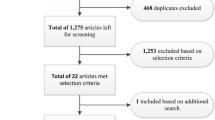Abstract
The present study examined the feasibility of evaluating online communication of cancer patients using an automated content analysis program modified for application to cancer-related communication. Public messages posted to the Breast Cancer Discussion List and the Prostate Problems Mailing List were content analyzed using an augmented version of Linguistic Inquiry and Word Count to evaluate communication styles within these two cancer types. Breast cancer patients were more likely to submit multiple messages to the list and made greater use of words related to emotional disclosure and cognitive processing compared with prostate cancer patients. Prostate cancer patients were less likely to seek emotional support or repeated interaction with other patients, and more of their communication focused on cancer-related information. Use of cancer-specific word libraries significantly increased word identification within these samples. Content analysis of online communication appears to be a promising method for detecting communication differences among subgroups of cancer patients.
Similar content being viewed by others
REFERENCES
American Cancer Society (2000). Complementary and alternative cancer methods, American Cancer Society, Atlanta, Georgia.
Brody, L. R. (1996). Gender, emotional expression, and parent–child boundaries. In Emotion: Interdisciplinary perspectives.Kavanaugh, R. D., and Zimmerberg, B. (Eds.), Erlbaum, Hillsdale, NJ.
Campbell, J. L. (1996). Traditional men in therapy: Obstacles and recommendations. J. Psychol. Pract.2(3): 40–45.
Carroll, P. R., Lee, K. L., Fuks, Z. Y., and Kantoff, P. W. (2001). Cancer of the prostate In Devita, V. T., Hellman, S., and Rosenberg, S. A. (Eds.), Cancer: Principles and practice of oncology, Lippincott Williams & Wilkins, Philadelphia, pp. 1418–1479.
Classen, C., Koopman, C., Angell, K., and Spiegel, D. (1996). Coping styles associated with psychological adjustment to advanced breast cancer. Health Psychol. 15(6): 434–437.
Davison, K. P., Pennebaker, J. W., and Dickerson, S. S. (2000). Who talks? The social psychology of illness support groups. Am. Psychol.55(2): 205–217.
Epstein, J., and Klinkenberg, W. D. (2001). From Eliza to Internet: A brief history of comput-erized assessment. Comput. Hum. Behav.17(3): 295–314.
Esterling, B. A., L'Abate, L., Murray, E. J., and Pennebaker, J. W. (1999). Empirical foundations for writing in prevention and psychotherapy: Mental and physical health outcomes. Clin. Psychol. Rev.19(1): 79–96.
Eysenbach, G., and Till, J. E. (2001). Ethical issues in qualitative research on Internet commu-nities. BMJ323(7321): 1103–1105.
Fogel, J., Albert, S. M., Schanbel, F., Ditkoff, B. A., and Neuget, A. I. (2002). Internet use and social support in women with breast cancer. Health Psychol.21(4): 398–404.
Kiss, A., and Meryn, S. (2001). Effect of sex and gender on psychosocial aspects of prostate and breast cancer. BMJ323(7320): 1055–1058.
Klemm, P., Hurst, M., Dearholt, S. L., and Trone, S. R. (1999). Gender differences on Internet cancer support groups. Comput. Nurs.17(2): 65–72.
Klemm, P., Reppert, K., and Visich, L. (1998). A nontraditional cancer support group: The Internet. Comput. Nurs.16(1): 31–36.
Meric, F., Bernstam, E. V., Mirza, N. Q., Hunt, K. K., Ames, F. C., Ross, M. I., Kuerer, H. M., Pollock, R. E., Musen, M. A., and Singletary, S. E. (2002). Breast cancer on the World Wide Web: Cross-sectional survey of quality of information and popularity of websites. BMJ324(7337): 577–581.
Owen, J. E., Klapow, J. C., Roth, D. L., Nabell, L., and Tucker, D. C. (2004). Improving the effec-tiveness of adjuvant psychological treatment for women with breast cancer: The feasibility of providing online support. Psychooncology13(4): 281–292.
Owen, J. E., Klapow, J. C., Roth, D. L., Shuster, J. L., Bellis, J., Meredith, R., and Tucker, D. C. (in press, b). Randomized pilot of a self-guided Internet coping group for women with early-stage breast cancer. University of Alabama at Birmingham, Birmingham, AL, unpublished manuscript.
Owen, J. E., Yarbrough, E. J., Vaga, A., and Tucker, D. C. (2003). Investigation of the effects of gender and preparation on quality of communication in Internet support groups. Comput. Hum. Behav.19(3): 259–275.
Pennebaker, J. W. (1997). Writing about emotional experiences as a therapeutic process. Psy-chol. Sci.8(3): 162–166.
Pennebaker, J. W. (2000). Telling stories: The health benefits of narrative. Lit. Med.19(1): 3–18.
Pennebaker, J. W., Francis, M. E., and Booth, R. J. (2001). Linguistic inquiry and word count: LIWC 2001, Erlbaum, Mahwah, NJ.
Polce, L. M., Myers, B. J., Kilmartin, C. T., Forssmann-Falk, R., and Kliewer, W. (1998). Gen-der and age patterns in emotional expression, body image and self-esteem: A qualitative analysis. Sex Roles38(11–12): 1025–1048.
Ries, L. A. G., Miller, B. A., Hankey, B. F., Kosary, C. L., Harras, A., and Edwards, B. K. (1994). SEER cancer statistics review, 1973–1991: Tables and graphs, NIH Pub. No. 94-2789, National Cancer Institute, Bethesda, MD.
Sells, D. J., and Martin, R. B. (2001). Gender and modality differences in experiencing and emotional expression. Can. J. Couns.35(2): 176–188.
Sharf, B. F. (1997). Communicating breast cancer on-line: Support and empowerment on the Internet. Women Health26(1): 65–83.
Smyth, J. M. (1998). Written emotional expression: Effect sizes, outcome types, and moderating variables. J. Consult. Clin. Psychol.66(1): 174–184.
Stanton, A. L., Danoff-Burg, S., Cameron, C. L., Bishop, M., Collins, C. A., Kirk, S. B., Sworowski, L. A., and Twillman, R. (2000). Emotionally expressive coping predicts psycho-logical and physical adjustment to breast cancer. J. Consult. Clin. Psychol.68(5): 875–882.
Stone, L. D., and Pennebaker, J. W. (2002). Trauma in real time: Talking and avoiding online conversations about the death of Princess Diana. Basic Appl. Soc. Psychol.24(3): 173–183.
Taylor, S. E., Klein, L. C., Lewis, B. P., Gruenewald, T. L., Gurun, R. A. R., and Updegraff, J. A. (2000). Biobehavioral responses to stress in females: Tend-and-befriend, not fight-or-flight. Psychol. Rev.107(3): 411–429.
Winer, E. P., Morrow, M., Kent, O. C., and Harris, J. R. (2001). Malignant tumors of the breast. Cancer of the prostate. In Devita, V. T., Hellman, S., and Rosenberg, S. A. (Eds.), Cancer: Principles and practice of oncology, Lippincott Williams & Wilkins, Philadelphia, pp. 1654–1717.
Author information
Authors and Affiliations
Rights and permissions
About this article
Cite this article
Owen, J.E., Klapow, J.C., Roth, D.L. et al. Use of the Internet for Information and Support: Disclosure Among Persons with Breast and Prostate Cancer. J Behav Med 27, 491–505 (2004). https://doi.org/10.1023/B:JOBM.0000047612.81370.f7
Issue Date:
DOI: https://doi.org/10.1023/B:JOBM.0000047612.81370.f7




